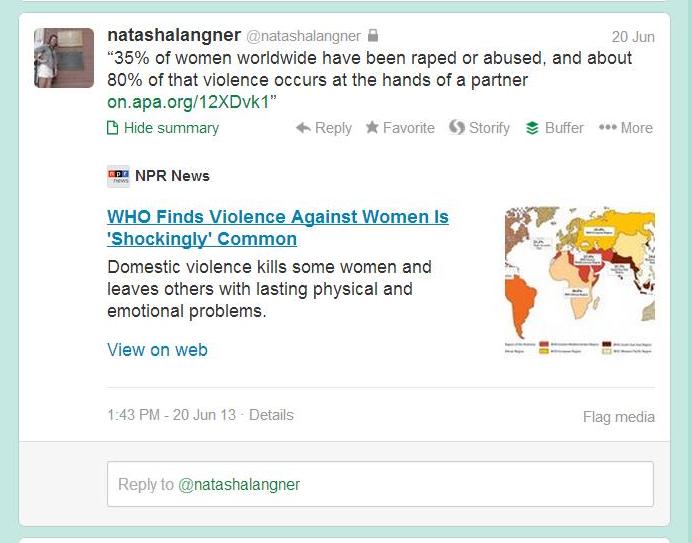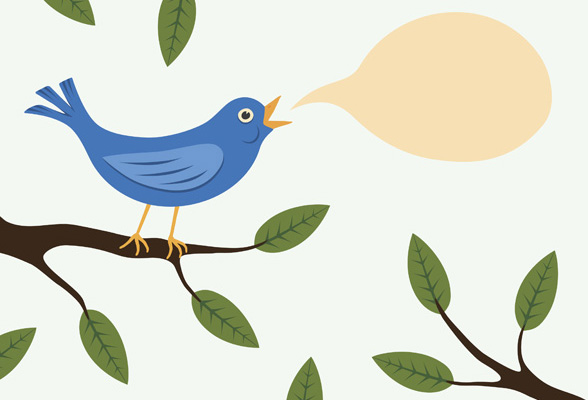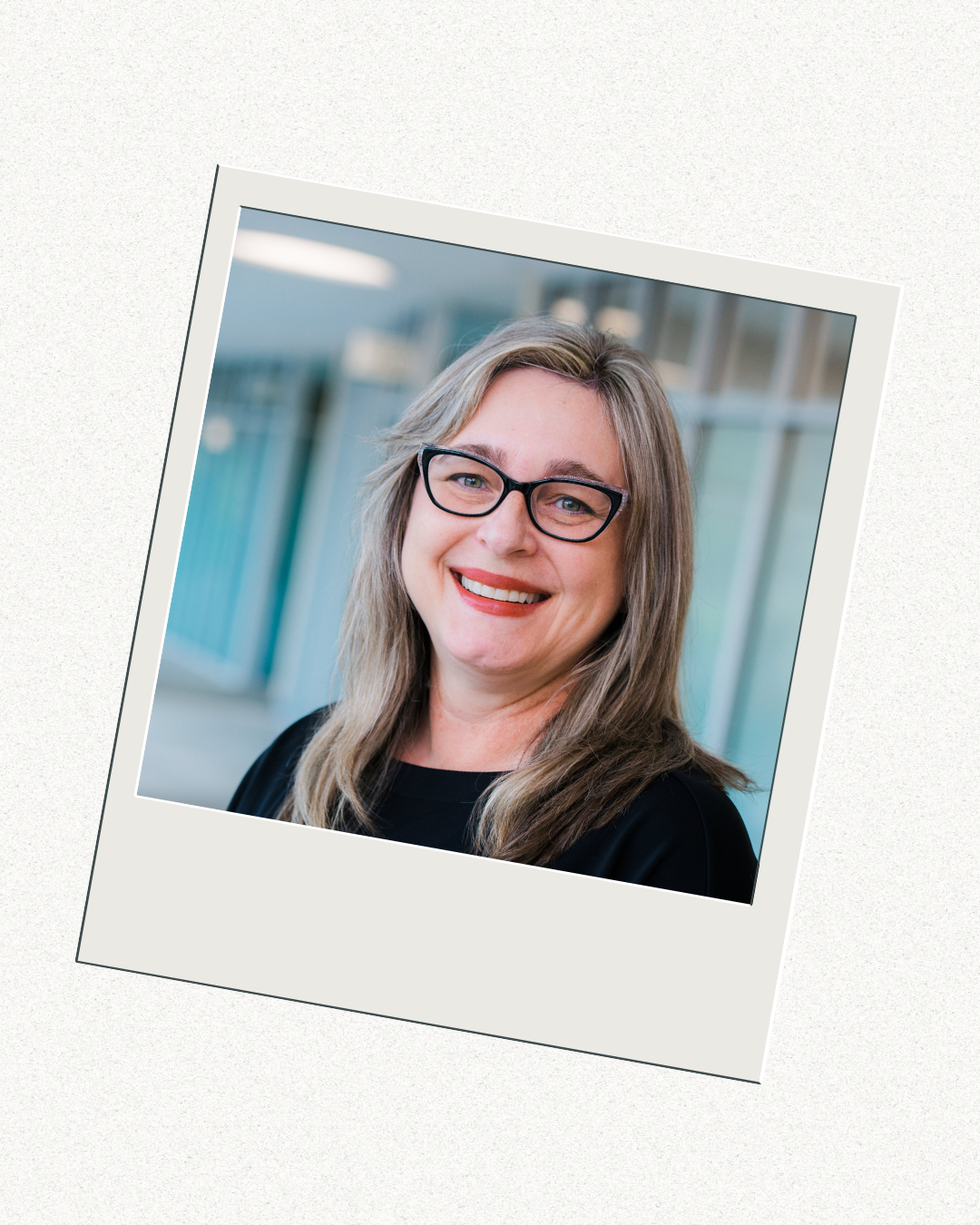Tweeting Is Not Just For The Birds… By Natasha Langner
 Natasha Langner is an undergraduate social work and psychology major at the University of Montevallo. In this post, she discusses what she learned from using Twitter during an internship at the Washington Center in 2013.
Natasha Langner is an undergraduate social work and psychology major at the University of Montevallo. In this post, she discusses what she learned from using Twitter during an internship at the Washington Center in 2013.
During the summer, I had the pleasure of studying in DC through The Washington Center for Internships and Academic Seminars interning with Becky’s Fund, which is a non-profit organization working towards assisting victims of domestic violence as well as bringing awareness to the issue in the community through various programs and through the social networks such as Twitter and Facebook.
My first assignment with the organization was to find five interesting articles dealing with domestic violence. I had to read, analyze, summarize the content, and then use the summarized content to come up with an engaging sentence that will attract the readers to click on the Twitter link. This is actually harder to do than it seems, especially since I never used Twitter in a professional setting before that assignment.
One of the most important things I had to keep in mind as I used Twitter was the fact that whatever piece of news I decided to share with the online community, I had to make sure that it was thought-provoking and that the audience learned something. Because of the vast amount of information that Twitter generates, I had to make sure that my Tweets stood out, which requires creativity and an analysis of the articles that I shared.
My strategy for using Twitter is asking many, many different questions. Whenever I read a news article, I ask myself why the information is important to me, and why should the public care about this information. If you cannot come up with an answer to both of those questions then you should probably find something else to Tweet. Next, I create a question that is directed towards my audience, whether asking for their opinion on the issue at hand (because everyone loves to give their opinions), or asking the viewers to think about how this issue affects them personally and what they can do about it.
The greatest advantage of utilizing Twitter as a student is the networking aspect. When I was in DC, we were constantly reminded to network with other interns as well as professionals in the city. When we engaged in networking events, Twitter was the most popular form of communication and connection among the people after the initial meeting. Twitter allows students to connect with other professionals and it exposes us to an abundant amount of resources from all over the world. When I met people in high positions they did not say, “Here’s my e-mail if you need anything”, but they did say, “Follow me on Twitter, or Let’s connect on Twitter”.
For future professionals, Twitter allows us to build our “work samples” in the areas that we are passionate about. Employees will look at your online profile before they will look at your resume or before they decide to hire you. Twitter allows them to see your involvement in the issues that are important to the organization or the company that you are hoping to work for one day. Having a strong Twitter account, meaning you use your Twitter for discussions of important issues, will enhance your image as a future professional because it tells others that you are keeping yourself informed in the current events as well as advocating on behalf of the issues by taking the time to inform the public.
My recommendations for using Twitter include:
– Find an organization or an issue that you are passionate about and follow them.
– Learn to summarize vital information in two good sentences and then learn how to use that information to engage the public. This practice will be valuable in other areas of your life.
– Be consistent with your account. Try to Tweet something important on a frequent basis. Do not make your followers wait a year until you make another Tweet.
– Be engaging and creative with your audience. If they do not see how an issue applies to them, they will probably ignore your Tweet.
-Finally, use Twitter as if someone’s life depended on it. If domestic violence is your issue, then make sure that each Tweet counts because you might literally save someone’s life with the information that you post.
Tweeting Is Not Just For The Birds… By Natasha Langner
How to cite this post:
Langner, N. (2013, November 5). Tweeting Is Not Just For The Birds… By Natasha Langner [Blog Post]. Retrieved from https://laureliversonhitchcock.org/2013/11/05/tweeting-is-not-just-for-the-birds-by-natasha-langner/.
How I learned to stop worrying and tweet, Part 2
This post was originally written for Curation Culture, a blog by my friend and colleague, Andrew Battista.
was originally written for Curation Culture, a blog by my friend and colleague, Andrew Battista.
In my previous post about Twitter, I discussed how I developed public lists in Twitter as a form of curation, an activity of organizing and giving meaning to the information available in the world. By using Twitter to curate, I discovered a natural progression to using it as a tool of professional communication with students and professional colleagues. I want to share some of the examples of how Twitter became a useful and effective communication tool for me and my students:
Posting Links: This is be done by tweeting an article or other link from another sources such as a newspaper, website or other online source. Other Twitter users can click on the link to access the article for review, and then respond by tweeting. For example, one student, who was interested in mental health issues, posted an article from a national newspaper about the overmedication of children in the US foster care system. This elicited several responses from their classmates as well as other Twitter users, creating a public and open conversation by the students and other professionals in the field. I frequently post links from Alabama and National newspapers about articles related to social welfare policies in the state as a way to get conversations started among my students.
Direct Messaging: This is a private message that you can send to another Twitter user. A student in one of my classes was working on a paper about foster care and adoption for a different class, and had developed a public list on the topic. She was following the Twitter feed of a federal child welfare agency and noticed the agency was tweeting about the latest statistics on adoption. She wanted to know about the data related to foster care, so she sent a direct message to the agency. She reported that she received a tweet back from a government official at the agency, sending a website link to the latest statistics on foster care in the US, just hours after posting her question. I have used direct messaging to contact other social work educators and colleagues from around the country when I have specific questions that I don’t want to share publicly.
Using Hashtags or Backchanneling: This is when the hashtag symbol (#) is used with along with a keyword or tag to help mark or label what a tweet is about. This allows Twitter users another way to keep up with an on-going public conversation by searching Twitter for the hashtag. This works best if everyone agrees on the hashtag and actually puts the hashtag in their post. For example, I designated a hashtag for each of my courses. The hashtag for SWK 420 Social Work Practice with Small Groups, Communities and Organizations is #SWK420UM. Students include this hashtag when they are tweeting something related to course content or an assignment, making it very easy to track their tweets or a class related conversation.
This is now a common practice at national conferences and other meetings for many disciplines, including social work. Over the summer I was unable to attend the National Association of Social Workers 2012 Conference: Restoring Hope: The Power of Social Work so I followed along with the conference on Twitter using #SWHOPE, which was designated by the conference organizers. The conference’s keynote speaker was Leymah Roberta Gbowee, a 2011 Nobel Peace Laureate, Social Worker and founder of Gbowee Peace Foundation Africa, and I was able to follow her speech through the tweets of individuals attending the conference. It was not the same as being there to hear her words in person, but a good and cheap alternative.
I have also used this backchanneling in the classroom. Last semester, I took my SWK 420 class to the library for instruction related to their community assessment project. This project requires students to find statistics and data from such sources as the US Census Bureau and the Annie E. Casey Foundation about different counties in Alabama. Dr. Andrew Battista suggested that we use Twitter during the class to share data resources. So while Dr. Battista showed the class different resources for their assignment, I listened to the questions the students were asking and knowing their interests posted links that included relevant resources for their assignment. For example, one student was going to do an assessment of Jefferson County, AL and was interested in statistics on HIV/AIDS. I posted a tweet with a link to the Center for Disease Control and Prevention’s HIV/AIDS Statistics and Surveillance website. The student was able to access the website in class, decided to use it as a data source for her project and then followed the CDC on Twitter. Additionally, other students had access to the same information in real time.
I know there are many other ways that Twitter is being used to promote professional communication between students, instructors and the professional community. Do you have another example or idea? Please share your thoughts by posting a comment.
How to cite this post:
Hitchcock, L. I. (2013, October 30). How I learned to stop worrying and love Twitter, Part 2 [Blog Post]. Retrieved from https://laureliversonhitchcock.org/2013/10/30/how-i-learned-to-stop-worrying-and-tweet-part-2/.
How I learned to stop worrying and love Twitter, Part 1
This post was originally written for Curation Culture, a blog by my friend and colleague, Andrew Battista.
 I signed up for a Twitter account long before I actually tweeted. In fact my first tweet was September 8, 2011, a full year after I set up the account. While I was using Twitter to follow other people and organizations, I never posted a tweet because I couldn’t figure out how I could say anything in 140 characters, and thought who would read it anyway. Since that time, I have logged in 416 tweets, have 200 followers and follow over 500 different individuals and groups. While not this is not biggest leap into the world of social media, my use of Twitter has grown and developed over time, and it has become, for me, an important tool for networking, information sharing and professional development.
I signed up for a Twitter account long before I actually tweeted. In fact my first tweet was September 8, 2011, a full year after I set up the account. While I was using Twitter to follow other people and organizations, I never posted a tweet because I couldn’t figure out how I could say anything in 140 characters, and thought who would read it anyway. Since that time, I have logged in 416 tweets, have 200 followers and follow over 500 different individuals and groups. While not this is not biggest leap into the world of social media, my use of Twitter has grown and developed over time, and it has become, for me, an important tool for networking, information sharing and professional development.
How did I make this small leap into the world of microblogging? Two things…first, I read David Carr’s article Why Twitter will Endure. Carr makes a good (and balanced) argument that Twitter is a tool for keeping up with current affairs. He writes… “I’ve come to understand that the real value of the service is listening to a wired collective voice.” And then I went to meeting at Carmichael Library and heard Andrew Battista say for the first time something about something about Twitter in the classroom as a way to help students curate resource lists and promote learning via social media and other things. I had been looking for a way to connect and engage with my students in course content while introducing them to social media as a professional, not social, tool, and I had finally stumbled on it. So with help from Andrew, I decided to start using Twitter as an experiment in one of my classes, and I knew I had to do the assignment along with the students.
The first part of the assignment asked to students to create their own free Twitter account, and then follow the tweets (a message posted via Twitter containing 140 characters or fewer) of at least 40 different people or organizations (also known as Twitter users) related to specific social problem such as homelessness, drug abuse or child neglect. By following a list of Twitter users around a similar topic, students would gain an awareness of conversations happening in the public and professional sphere on their selected topic. The second part of the assignment asked to assess the various types of Twitter user’s and their feeds and determine why or why not they want to “follow” a given account on their public list. I gave the students simple criteria to make their assessment such as who was the Twitter user, who was the intended audience, how did they find this feed and why did you decide to add or not to add the feed to their public list.
I selected food insecurity as my topic for my public list. I started by searching Twitter for individuals and organizations that I already knew were connected with hunger and food insecurity issues…the UN World Food Program, Feeding America, and Michael Pollan. I found it hard to search in Twitter sometime so also went to straight to agency’s website such as the Food Action and Research Center and looked for the Twitter logo on their website, which would link me to their Twitter feed. I also did a few Google searches and located several new individuals such as the Renegade Lunch Lady.
Another way I found Twitter users to follow was to review another user’s following list. Besides a public list, every Twitter user has a list of people they follow (Following) and a list of people who follow them (Followers). For example, I reviewed who the UN World Food Program was following (over 31,000 different users) and discovered a lot of international organizations and food advocates. I wanted a more national and local feel to my public list so looked who Feeding America was following (over 33,000 users), and began following several individuals and groups from their list. Using these two methods, I had list with over 100 different users in a matter of hours. Then, I reviewed my list for about a week, and then began to “Unfollow” some users for a variety of reasons. Some did not post interesting or relevant information, some were too international in their focus, and some posted too much information and cluttered up my list. I eliminated several users until my list was about 80 users. Over the semester, I added a few other Twitter users to my food insecurity list based on recommendations from students, and now I add to the list when I find a new individual or organization through my research or discovery process. I have created several other public lists based on other topics such as social work groups and professionals in Alabama and public health social work. I also follow other people’s public lists.
One of the great things about a Twitter list is that it sorts all the tweets you receive on a specific topic. You can then review only those tweets rather than search through all of tweets posted by the people or groups you follow. I found my own list to be a valuable resource while I was co-teaching the Summer Harvest Course with Jill Wicknick this past summer. My part of the course focused on introducing students to the problem of hunger and food insecurity in Alabama and the US. While reviewing my own list on food insecurity I was able to easily locate the latest data on food insecurity in the US for a lecture, and stayed informed on the food stamp debate among politicians in Washington DC related to the Farm Bill.
How to cite this post:
Hitchcock, L. I. (2013, October 30). How I learned to stop worrying and love Twitter, Part 1 [Blog Post]. Retrieved from https://laureliversonhitchcock.org/2013/10/30/how-i-learned-to-stop-worrying-and-love-twitter-part-1/.


